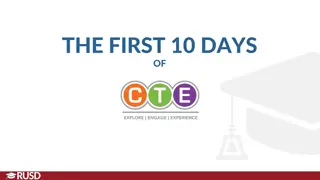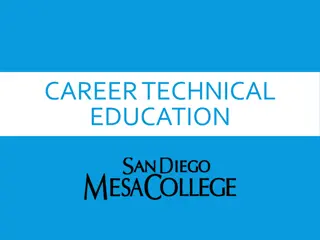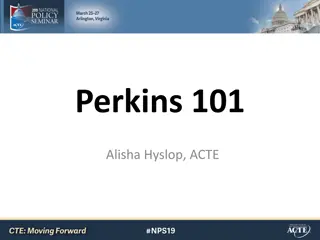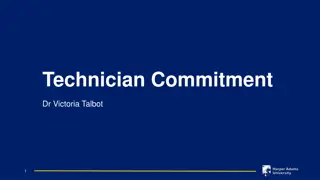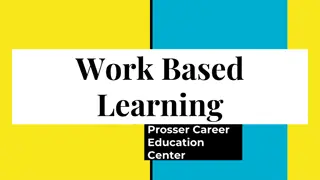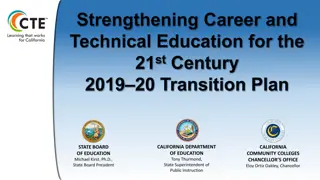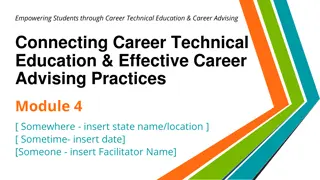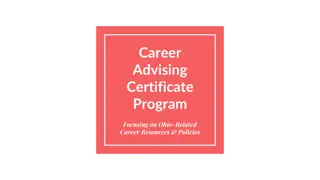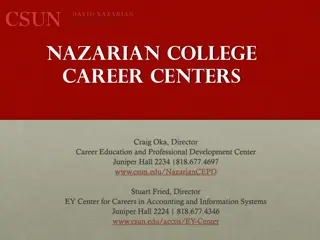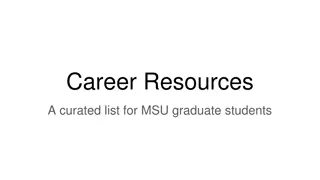Exploring Work-Based Learning in Career and Technical Education
Work-based learning provides students with valuable real-world experiences, bridging the gap between classroom knowledge and practical skills. It offers benefits to students, schools, and employers, enhancing academic performance, student motivation, and workforce readiness. Various types, such as apprenticeships, internships, and job shadowing, cater to different learning needs at different stages of education. Embracing work-based learning opens doors to exploration, skill development, and career pathways.
Download Presentation

Please find below an Image/Link to download the presentation.
The content on the website is provided AS IS for your information and personal use only. It may not be sold, licensed, or shared on other websites without obtaining consent from the author. Download presentation by click this link. If you encounter any issues during the download, it is possible that the publisher has removed the file from their server.
E N D
Presentation Transcript
CAREER AND TECHNICAL EDUCATION: CAREER AND TECHNICAL EDUCATION: PATHWAYS & WORK PATHWAYS & WORK- -BASED LEARNING MICHAEL A. PRIOLEAU BASED LEARNING
WHAT IS WORK-BASED LEARNING? Work Work- -based learning is your chance to based learning is your chance to discover things you can't learn in a discover things you can't learn in a classroom. Get inside information about the classroom. Get inside information about the career you're interested in, or simply get a career you're interested in, or simply get a taste of what it's really like on the job. taste of what it's really like on the job. Guilford County Schools STRIVING, ACHIEVING, EXCELLING
Why Choose Work-Based Learning? Benefits to Students Benefits to Students Work-based learning can help students improve academically. It helps them learn how the things they learn in the classroom are connected to the real world. It's also a great way to explore career options.
Why Choose Work-Based Learning? Benefits to Schools Benefits to Schools Work Work- -based learning can improve student based learning can improve student motivation, attendance, and graduation rates. It motivation, attendance, and graduation rates. It can also improve the school's relationship with can also improve the school's relationship with the community the community
Why Choose Work-Based Learning? Benefits to Employers Benefits to Employers Work Work- -based learning helps employers reduce based learning helps employers reduce their recruitment and training costs. It also their recruitment and training costs. It also helps them hire better helps them hire better- -prepared employees who prepared employees who understand workplace expectations. understand workplace expectations.
TYPES OF WORK- BASED LEARNING APPRENTICESHIPS APPRENTICESHIPS 1 1CAREER EXPLORATION CAREER EXPLORATION 3 3NTERNSHIPS NTERNSHIPS 2 2JOB SHADOWING JOB SHADOWING NOTES: NOTES: 1 1 PATHWAYS FRESHMEN YEAR PATHWAYS FRESHMEN YEAR 2 2 PATHWAYS SOPHOMORE & JUNIOR YEARS PATHWAYS SOPHOMORE & JUNIOR YEARS 3 3 PATHWAYS SENIOR YEAR PATHWAYS SENIOR YEAR
QUESTIONS CAREER AND TECHNICAL EDUCATION: CAREER AND TECHNICAL EDUCATION: PATHWAYS & WORK PATHWAYS & WORK- -BASED LEARNING BASED LEARNING
FOR MORE INFORMATION, PLEASE CONTACT: MICHAEL PRIOLEAU CAREER DEVELOPMENT COORDINATOR 336-334-3662 priolem@gcsnc.com












